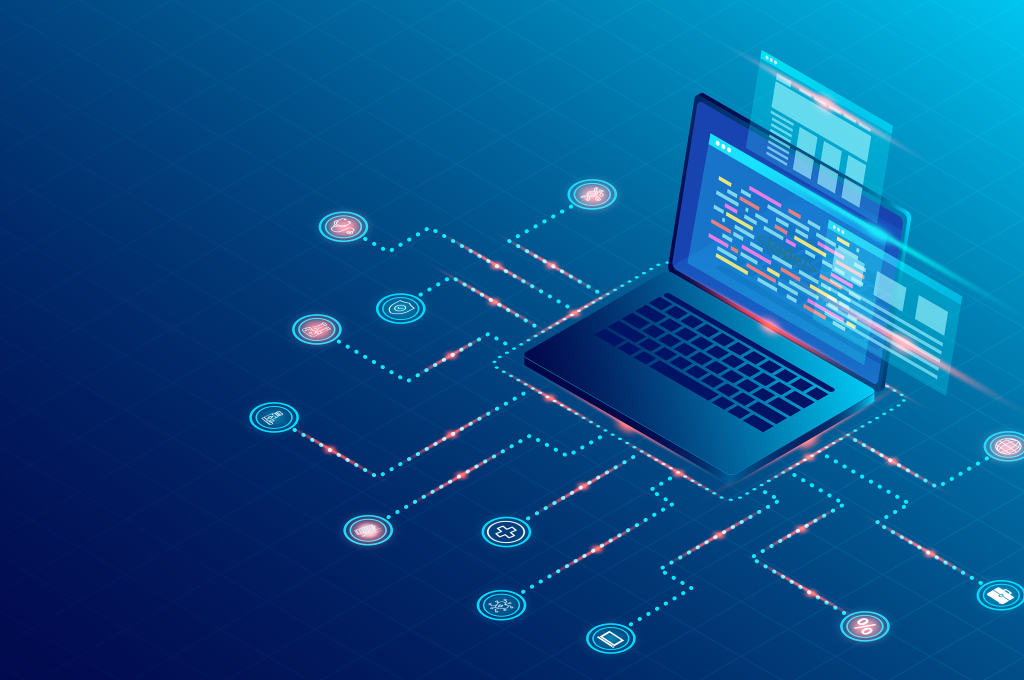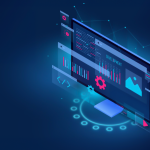Are No-Code Platforms a Risk to Healthcare Data Security in 2025?
- TronsIT Solutions
- 0 Comments
In the push toward digital transformation, healthcare providers are increasingly turning to no-code platforms to accelerate app development without the heavy lifting of traditional programming. From automating patient intake to building custom dashboards for clinical data, these platforms provide a fast and cost-effective solution for healthcare teams eager to innovate. But speed and accessibility often come at a cost — and in 2025, that cost could be data security.
The healthcare sector operates under some of the most stringent data protection laws globally. Any technology that handles protected health information (PHI) must comply with regulations such as HIPAA, HITECH, and various state-level privacy mandates. No-code platforms, built primarily for general-purpose use, weren’t initially designed with these requirements in mind. That disconnect is starting to raise red flags among healthcare IT leaders.
What makes no-code solutions particularly risky is that they’re often used by non-technical users — such as clinicians, administrative staff, or operations managers — who may not fully understand how data is stored, transmitted, or accessed. This democratization of development, while empowering, can open the door to misconfigurations, data oversharing, and breaches that go unnoticed until it’s too late.
Moreover, the shared architecture of many non-code platforms means data could be hosted across multiple environments, including third-party servers that may or may not meet healthcare-grade security standards. This is why a HIPAA Business Associate Agreement is vital. It formalizes the vendor’s responsibility to safeguard patient data and gives healthcare organizations some legal assurance that their partners are taking compliance seriously.
The Growing Challenge of Governance and Oversight
Beyond the question of vendor compliance lies an even more complex issue — governance. As more departments across healthcare organizations adopt no-code platforms, maintaining visibility and control becomes a significant challenge. In many cases, apps are built outside the purview of IT departments, bypassing standard protocols for data security, testing, and integration.
This is where low-code application governance becomes critical. Governance isn’t just about setting rules — it’s about creating a framework that ensures consistency, security, and accountability across every application developed. In 2025, forward-thinking healthcare systems are beginning to implement governance models that monitor access controls, enforce secure development practices, and require regular audits of all no-code and low-code tools in use.
Healthcare CIOs and CISOs are also putting policies in place to guide citizen developers on how to handle PHI safely, integrate with clinical systems like EHRs, and avoid risky third-party plugins. The goal isn’t to slow down innovation but to build a protective layer that lets teams move fast and stay secure.
Additionally, some organizations are forming governance committees that include representatives from IT, legal, compliance, and clinical operations. These groups review new app proposals, approve platform usage, and ensure all development activity aligns with enterprise standards. This model not only mitigates risk but also creates a culture of shared responsibility for digital health initiatives.

Can No-Code Platforms Be Trusted?
The short answer? It depends. Not all no-code platforms are created equal, and not all are built to handle the complexity of healthcare data management. However, many platforms are evolving to offer features that better align with healthcare needs — including audit logging, encryption, access restrictions, and secure cloud hosting options.
Some vendors are even building healthcare-specific modules or launching HIPAA-compliant versions of their platforms. That’s a promising step forward, but it’s still crucial for healthcare organizations to conduct detailed risk assessments before signing on the dotted line. Look for platforms that provide transparency about data storage, API usage, third-party integrations, and breach response protocols.
It’s also worth noting that no-code development when combined with solid governance and oversight, can improve agility in healthcare IT. Hospitals no longer need to wait months for a developer to create a new form or workflow. With the proper safeguards in place, clinical teams can make their solutions to operational bottlenecks — and iterate in real-time.
Final Thoughts: Balancing Innovation with Security
There’s no doubt that no-code platforms are here to stay. In 2025, they’re helping healthcare providers innovate faster, personalize patient care, and respond to challenges in near real-time. However, innovation without protection is a recipe for disaster — especially when sensitive patient data is involved.
Securing protected health information must be the North Star for any healthcare digital initiative. This means more than just encrypting data or buying HIPAA-compliant software. It requires an ecosystem-wide approach — from vendor vetting and staff training to ongoing audits and governance models.
That’s where TronsIT Solutions stands out. With deep experience in both healthcare and secure software development, TronsIT helps organizations embrace modern development models without compromising compliance or security. Whether you’re exploring no- code platforms or building enterprise-scale applications, TronsIT can guide you every step of the way.
For more information, please , explore our website!
Related Posts
How Custom Development Helps Businesses Stay Ahead of the Competition
- TronsIT Solutions
- April 28, 2025
In today’s ultra-competitive marketplace, innovation isn’t just about coming up wit ..
From Errors to Excellence: Custom-Built Billing Software for Smarter Healthcare
- TronsIT Solutions
- June 19, 2025
In 2025, healthcare billing is no longer just about generating invoices—it has become a strat ..


